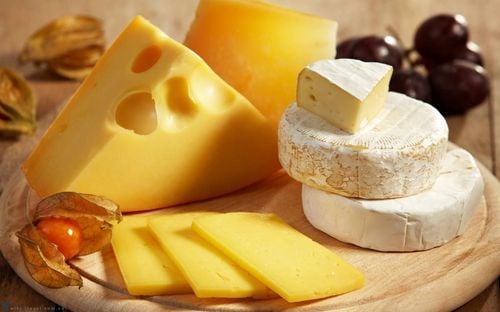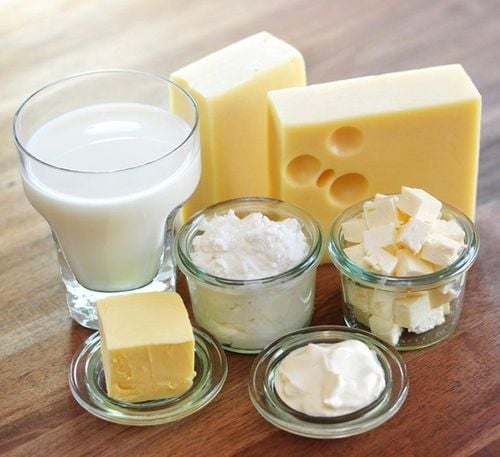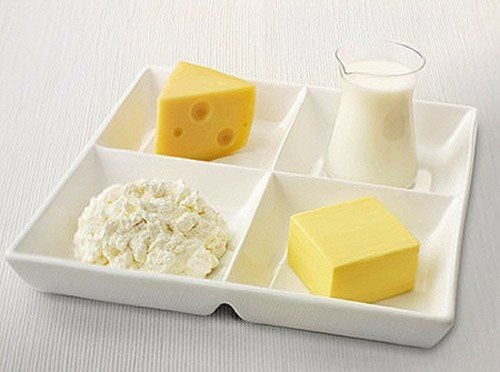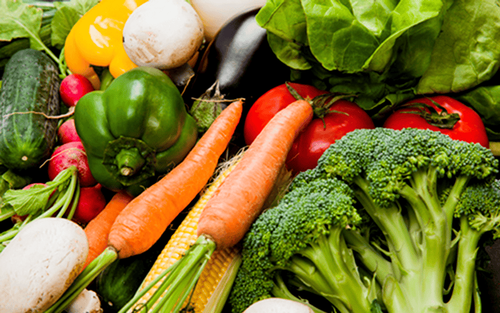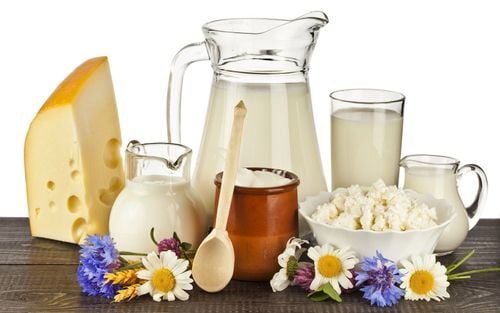This is an automatically translated article.
Cheese is a nutritious food made mainly from the milk of cows as well as other mammals, including sheep, goats, buffalo, reindeer, camels and yaks. About 4000 years ago, humans started raising animals and processing milk into cheese. However, the nutritional value of cheese and the way it is processed and preserved is not known to consumers. In this article, we will provide useful information so that you can better understand the nutritional value and how to process and preserve cheese to ensure delicious and nutritious.
1. Nutrition in cheese
Cheese is an age-old food source, loved by everyone for its richness, creaminess, flavor and quality. It was discovered in ancient civilizations during the development of agriculture and domestication of goats and sheep for milk. Cheese is discovered by accident, while people leave milk in the sun for many hours, it will ferment sour and the protein components coagulate into solids, when removing the liquid or whey and other components. , leaving only the milk to curdle and form cheese. Since then, countries around the world have experimented and produced cheese, varying the types of milk, the time it takes for the cheese to age and ripen, using different additives such as salt and acid to create the best results. unique texture and taste.
Cheese is a nutritious dairy food that provides protein, fat, protein, calcium, phosphorus, vitamins and minerals, vitamin A, vitamin B12, vitamin B1 .... Low-moisture block cheeses like Parmigiano-Reggiano and aged cheddar are easy to store and move well because they don't need refrigeration. Cheese may be better tolerated than milk in some people because it is lower in lactose, a sugar that is not easily digested if people lack the enzyme that breaks it down.
The nutrients in cheese vary in content. One ounce of hard cheese, or a thumb-sized piece, contains about 120 calories, 8 grams (g) of protein, 6 g of saturated fat, and 180 milligrams (mg) of calcium. Half a cup of soft cheese like 4% whole-fat cheese has about 120 calories, 14g protein, 3g saturated fat, and 80mg calcium. Most cheeses are high in sodium with 300-450 mg per serving because salt is a key ingredient to retain moisture and prevent bacterial overgrowth. However, some cheeses like goat cheese, whole milk mozzarella, and Swiss cheese are low in sodium with as little as 50-100 mg per serving.
Dairy foods are always a good source of full-fat nutrition, containing large amounts of saturated fat and some cholesterol. The fat in milk is about 70% saturated fat, 25% monounsaturated and 5% polyunsaturated. Because eating a lot of saturated fat can raise LDL cholesterol levels, and because cheese is often high in sodium, it's generally advisable to eat cheese in limited amounts because its ingredients can have an adverse effect on your health. health. However, there is still much debate about the effects of cheese on human health. Although the US Dietary Guidelines advise people to choose low-fat dairy like yogurt, cheese, etc. to prevent cardiovascular disease, some reports have shown that full-fat dairy may reduce the risk of cardiovascular disease and type 2 diabetes. In these studies, it was suggested that perhaps nutrients found in cheese may be cardioprotective, such as calcium and conjugated linoleic acid, and the saturated fatty acids in cheese have different effects on the heart than others, such as in red meat. During the processing of some cheeses, bacteria are added during the fermentation stage, which can alter its effect on blood cholesterol. However, this is a fairly new theory with early evidence mainly arising from certain cheeses produced with probiotics. In addition, diet related to cheese intake can make a difference as cheese can replace red meat in the diet. In the United States, for example, cheese is often added to pizzas or burgers that contain refined grains, meats that are high in saturated fat, and sodium. Such diets are likely to have adverse health effects regardless of cheese consumption.
Although cheese contains a lot of saturated fat and sodium, it also contains large amounts of calcium and protein, and some fermented foods contain probiotics. So a modest amount of cheese can be considered part of a healthy diet. But how to eat is something to pay attention to. Cheese paired with foods like refined grains (white pasta, bread, crackers, etc.) and processed meats can negate its health benefits. On the other hand, cheese may have health benefits if consumed as a substitute for red and processed meats or eaten as a snack instead of chips. Do not use too much cheese in a day, researchers recommend using 250g of dairy foods per day (about 8 ounces of milk), or equivalent amount of cheese (because milk is about 90% water). , which is equivalent to 1 ounce of hard cheese).

Phô mai là một loại thực phẩm từ sữa giàu chất dinh dưỡng, cung cấp protein, chất béo, chất đạm, canxi, phốt pho, vitamin và khoáng chất, vitamin A, vitamin B12, vitamin B1,...
2. Preserving cheese
Cheese that comes in many forms such as soft like cream, cottage cheese, goat cheese and shredded cheese has a high moisture content and should be refrigerated to prevent bacteria growth. The lower humidity in harder cheeses prevents bacteria from growing so they don't need to be refrigerated, but lower temperatures can preserve the flavor and texture of the cheese for longer. Opened soft cheeses should be refrigerated at 40-45 F for about 2 weeks. Should not be left longer because it will make the risk of mold growth, harmful to the user.
When buying cheese, check the label's use-by date for storage information on specific cheeses. Hard cheeses in the refrigerator, unopened, can be used for about 2-4 months; If open they last about 1 month. Opened and sealed hard cheeses last even longer in the freezer, about 7 months, if they are sealed from oxygen.
Cheese can also be sold in plastic or cellophane packaging, but wrapping too tightly can trap moisture and increase the risk of rotting. The cheese should be wrapped loosely in parchment paper or foil to allow the cheese to "breathe". For cheeses that have a strong odor, they should be stored in an airtight container, placed in a separate compartment to minimize contact with other foods, and prevent odors from spreading to other foods.
3. Cheese processing

Hương vị của phô mai sẽ ngon hơn khi thưởng thức riêng biệt chúng với những đồ ăn khác.
If using cheese in combination with gold wine, make sure that the combination is perfect. Some soft, fresh cheeses like Brie, ricotta, goat and halloumi pair well with white and red wines with less tannins like Chablis, Moscato and Pinot Grigio. Harder cheeses like cheddar, pecorino and manchego go well with high-tannin wines like Burgundy, Bordeaux and Zinfandel. Or maybe try pairing very salty cheese with the sweet flavors of Port or Sherry.
Cheese is also combined with fresh and sweet dried fruits such as apples, cherries, dates, apricots, ... or can be sprinkled on top of tomato, cucumber, olive and lettuce salad, .. Use cheese in dishes like soups, salads, vegetables or cereal dishes with a slice of freshly chopped tangy cheese. Rub some feta or goat cheese over raw or cooked vegetables. Adding some shredded mozzarella to homemade pizza creates unique flavors for each dish.
Maybe consider using cheese as a condiment to make sure that the high cholesterol, sodium and saturated fat content in cheese is not harmful to health.
For some people who don't like the taste of cheese or want to reduce their daily cheese intake, you can use variable nuts such as spreading almond or sunflower butter on a sandwich; sprinkle on salads; or freshly ground finely ground walnuts topping the plate, cashews, macadamia nuts and other nuts are also used in many dairy-free cheeses.
Any questions that need to be answered by a specialist doctor as well as customers wishing to be examined and treated at Vinmec International General Hospital, please contact the Website for the best service.
References: hsph.harvard.edu, healthline.com





